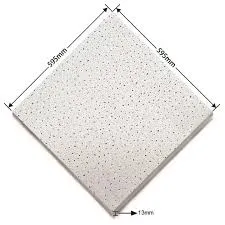- Afrikaans
- Albanian
- Amharic
- Arabic
- Armenian
- Azerbaijani
- Basque
- Belarusian
- Bengali
- Bosnian
- Bulgarian
- Catalan
- Cebuano
- Corsican
- Croatian
- Czech
- Danish
- Dutch
- English
- Esperanto
- Estonian
- French
- German
- Greek
- Hindi
- Indonesian
- irish
- Italian
- Japanese
- Korean
- Lao
- Malay
- Myanmar
- Norwegian
- Norwegian
- Polish
- Portuguese
- Romanian
- Russian
- Serbian
- Spanish
- Swedish
- Thai
- Turkish
- Ukrainian
- Uzbek
- Vietnamese
Նյմ . 06, 2024 13:57 Back to list
Innovative T-Bar Ceiling Panel Solutions for Modern Interior Design Needs
Understanding T-Bar Ceiling Panels A Comprehensive Guide
T-bar ceiling panels, commonly referred to as suspended ceilings or drop ceilings, have become a popular choice in commercial and residential construction. Their versatility, cost-effectiveness, and aesthetic appeal make them an attractive option for many building projects. In this article, we will delve into the characteristics, benefits, installation processes, and maintenance of T-bar ceiling panels.
What are T-Bar Ceiling Panels?
T-bar ceiling panels consist of a framework that is suspended from the original ceiling, forming a grid structure with T shaped metal channels. These channels house lightweight ceiling tiles, which can be made from a variety of materials, including mineral fiber, plastic, or metal. The resulting ceiling is not only functional but also offers a clean, finished look.
Benefits of T-Bar Ceiling Panels
1. Aesthetic Variety One of the strongest appeals of T-bar ceilings is their versatility in design. The tiles come in an array of colors, textures, and finishes, allowing homeowners and designers to match the ceiling to the overall decor of the space.
2. Access to Infrastructure T-bar ceilings provide easy access to the building’s infrastructure, including air ducts, plumbing, and electrical wiring. Unlike traditional ceilings that require significant work to modify, T-bar ceilings allow for simple tile removal, making maintenance and repairs straightforward and efficient.
3. Sound Absorption and Insulation Many T-bar ceiling panels are designed with sound-absorbing materials, significantly improving acoustics in commercial spaces such as offices, schools, and hospitals. This contributes to a more comfortable environment by reducing noise levels.
4. Energy Efficiency The use of insulation behind the T-bar ceiling panels can help to improve a building’s energy efficiency, leading to lower heating and cooling costs. Some tiles are designed to reflect light, enhancing energy savings by increasing natural lighting within a room.
5. Cost-Effective Compared to traditional ceiling installations, T-bar ceilings can be a more budget-friendly option. The materials can often be sourced at a lower cost, and the simplicity of installation reduces labor expenses.
t bar ceiling panels

Installation of T-Bar Ceiling Panels
Installing T-bar ceiling panels involves several key steps
1. Planning and Measurement Before installation, careful planning and precise measurements are crucial. Determine the desired height and ensure the layout accommodates all necessary light fixtures, vents, and other elements.
2. Framework Installation The first step in the installation process is to set up the grid system. Typically, the main T beams are installed first, followed by the cross T-bars that create the grid. This framework is usually anchored to the original ceiling with wires or brackets.
3. Tile Placement Once the framework is in place, the ceiling tiles are inserted into the grid. This step can often be done by one person, given the lightweight nature of most tiles.
4. Finishing Touches After all tiles are in place, any finishing touches such as lighting installation or vent covers can be added, ensuring a polished look to the newly installed T-bar ceiling.
Maintenance of T-Bar Ceiling Panels
Maintaining T-bar ceiling panels is generally simple. Regular cleaning with a damp cloth or vacuum can keep tiles looking fresh. If tiles become stained or damaged, individual panels can be easily replaced without disrupting the entire ceiling.
Conclusion
T-bar ceiling panels offer a myriad of benefits that enhance both functionality and aesthetics in various spaces. Their ease of installation, accessibility for maintenance, and design versatility make them a favored choice among contractors and homeowners alike. Whether you're renovating an office, upgrading a retail space, or redesigning your home, T-bar ceiling panels can provide an effective and stylish solution. Incorporating these structures into your design plan may not only elevate the visual appeal but also improve the overall efficiency of your space.
-
Mineral Fiber Ceiling Tiles Embossed Surface PatternNewsAug.05,2025
-
Mineral Fiber Board Xingyuan Vision for Better SpacesNewsAug.05,2025
-
Drop Down Ceiling Tile Office Use FitNewsAug.05,2025
-
PVC Gypsum Ceiling White Base ColorNewsAug.05,2025
-
Access Panel on Ceiling Xingyuan Integrity EthicNewsAug.05,2025
-
Ceiling Trap Doors Fire Resistant DesignNewsAug.05,2025







